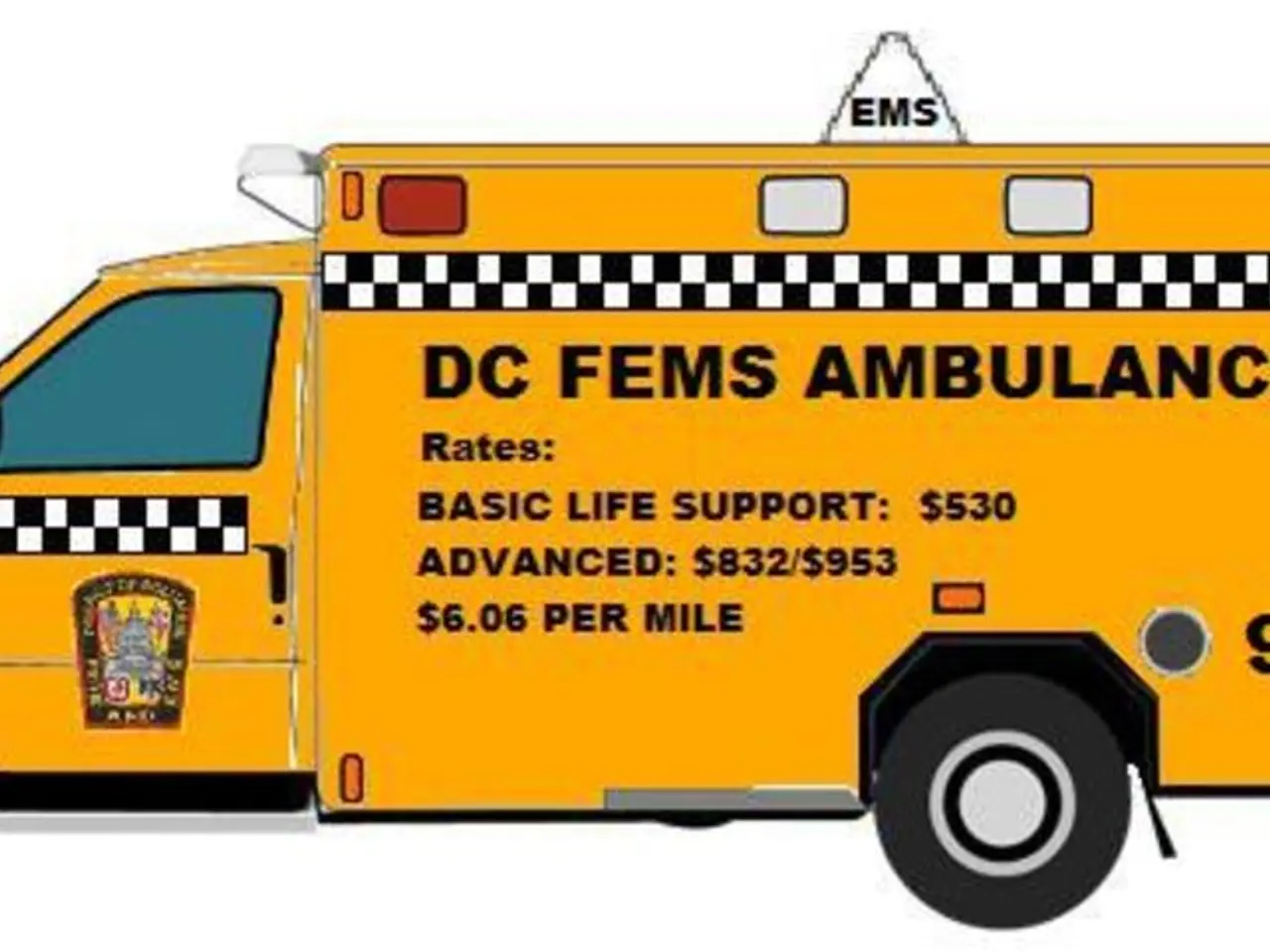Understanding Heart Failure: Information That Could Possibly Prevent Deaths
In a heart-stopping moment, every second counts. This is particularly true in the event of a cardiac arrest, a situation that requires immediate action to save a life. Prof. Dr. Bernd Böttiger, Federal Physician of the German Red Cross (DRK), emphasizes the importance of quick action by first responders or laypeople in such critical situations.
Cardiac arrest occurs when the heart stops beating, causing no blood or oxygen to reach the brain. This often happens at home, where the procedure is always the same: Check, Call, Compress. If you find someone unresponsive and showing no normal breathing, call the emergency services immediately. The control center will guide you through chest compressions.
Many people are worried about breaking the person's ribs and are too hesitant during chest compressions, or they fail to press hard enough or relieve pressure afterwards. However, pressing 5 to 6 centimeters deep during chest compressions can break ribs, but these fractures heal. The important thing is that the person survives.
Prof. Böttiger, who is also the Chairman of the German Resuscitation Council, further emphasizes the importance of first aid. He advocates for its mandatory inclusion in schools nationwide.
First responders bridge the time until the emergency services arrive by taking over the pumping function of the heart with chest compressions. Lay rescue paramedics play a crucial role in this process, providing immediate basic life support, including chest compressions and use of automated external defibrillators (AED), to increase survival chances.
In Germany, emergency services typically arrive within a median of nine minutes. However, during those crucial minutes, every action counts. Do not interrupt chest compressions until the emergency services arrive. If you're not alone, switch every 2 minutes at the latest.
Recognizing a cardiac arrest is crucial. Check if the person reacts to loud speech or gentle shaking, and if they are breathing normally. If unsure, call the emergency services immediately for assistance.
It's also important to note that the recovery position is often incorrectly used even in cases of cardiac arrest. The focus should be on chest compressions to maintain blood circulation and oxygenation.
The Danish footballer Christian Eriksen, who collapsed during an EURO 2021 match, was fortunate to be in an environment where many knew how to perform chest compressions. Quick action by bystanders likely played a significant role in his survival.
In a cardiac arrest, the brain, consuming about 20% of the oxygen, can die within three to five minutes if the heart stops. Remember, every second counts. So, let's equip ourselves with the knowledge and confidence to act in such critical situations.
To perform chest compressions, place one hand in the center of the chest, place the other on top, and press down with straight arms, with the shoulders directly above the pressure point, about 5-6 cm deep. The frequency of compressions is about twice per second. Remember a song like "Stayin' Alive" by the Bee Gees, Radetzky March by Strauss, or "Atemlos" by Helene Fischer to keep the rhythm.
In the face of a cardiac arrest, the best defense is a good offense. Let's take action, let's save lives.
Read also:
- Recognition of Exceptional Patient Care: Top Staff Honored by Medical Center Board
- A continuous command instructing an entity to halts all actions, repeated numerous times.
- Oxidative Stress in Sperm Abnormalities: Impact of Reactive Oxygen Species (ROS) on Sperm Harm
- Is it possible to receive the hepatitis B vaccine more than once?








